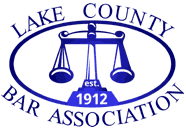The Difference Between Speeding and Driving Too Fast
 We all know what speed limits are - whether one chooses to obey them is another matter. However, it is possible to be simultaneously obeying the posted speed limit and driving too fast. The posted speed limit applies when road conditions are normal. Drivers must also take things like the weather, the traffic, and any damage to the road itself into consideration when determining the appropriate speed. Even if the driver who caused your car accident was following the speed limit, they could still be found to have been driving at a negligent speed if they failed to take other conditions into account. If your accident was caused by a driver who was going too fast but not speeding, you will want to speak to an attorney as soon as possible to begin building your case.
We all know what speed limits are - whether one chooses to obey them is another matter. However, it is possible to be simultaneously obeying the posted speed limit and driving too fast. The posted speed limit applies when road conditions are normal. Drivers must also take things like the weather, the traffic, and any damage to the road itself into consideration when determining the appropriate speed. Even if the driver who caused your car accident was following the speed limit, they could still be found to have been driving at a negligent speed if they failed to take other conditions into account. If your accident was caused by a driver who was going too fast but not speeding, you will want to speak to an attorney as soon as possible to begin building your case.
What is Speeding?
Legally, speeding means driving faster than the posted speed limit. It can be rather cut and dry. If the speed limit is 35 miles per hour and the driver was going 41, they were speeding. If they were going 36 miles per hour, they were speeding. As a practical matter, most law enforcement agencies tend to ticket drivers who exceed the speed limit by at least five miles per hour, but even one mile per hour over the limit is technically speeding.
Of course, there is such a thing as driving too slowly as well. It is illegal in Illinois to drive so slowly that they are getting in the way of normal traffic.
What is Driving Too Fast?
Posted speed limits aside, drivers are expected to use good judgment and reduce their speed when road conditions make driving the speed limit unsafe. A driver could be ticketed for reckless driving if they are going the speed limit in very poor conditions. A driver can also be found negligent in causing an accident if they fail to reduce their speed due to conditions like:
- Precipitation - If it is raining or snowing, drivers must take that into account. Rain and snow can cause poor visibility and make the road slippery. Drivers must reduce their speed when driving through rain or snow so that they are less likely to lose control of their vehicle or fail to stop on time.
- Fog - Fog can drastically impair visibility for drivers. Drivers should be aware that they may not be able to see potential hazards or other vehicles or pedestrians ahead of them. It is important to drive slower to account for the fact that they may need to stop or slow down quickly to avoid an accident.
- Traffic - In heavy traffic, drivers should reasonably be aware that sudden slowdowns are likely. Drivers should adjust their speed and maintain a greater following distance.
- Road condition - The condition of the road itself is a major factor. Problems like potholes, debris in the road after a storm, or missing lane markers should prompt careful drivers to slow down.
Even if the driver who caused your car crash was following the speed limit, they could still have been driving negligently due to their speed.
Contact a Lake County Car Accident Attorney
If you have been injured in a car accident, Barrington Injury Attorneys may be able to recover financial compensation on your behalf. Our skilled Barrington car accident lawyers can begin investigating as soon as you call. Contact us at 224-900-HURT for a free consultation.
Source:
https://www.isp.illinois.gov/TrafficSafety/SpeedLimitEnforcement










